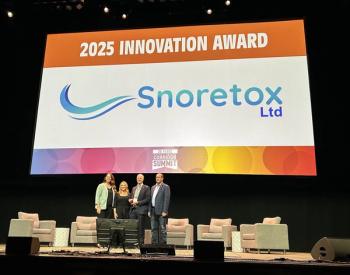
What is new in pulmonary medicine? (Proceedings)
Tracheal stenting has been recently re-introduced as an approach to management of severe tracheal collapse. Severe tracheal collapse is life-threatening and while extra-thoracic collapse may be amenable to extra-luminal prosthetic rings, intra-thoracic collapse is not.
Respiratory disease is an occasionally overlooked area of veterinary medicine. The goal of this hour is two-fold, the first is a review of some exciting pulmonary developments over the last few years, while the second is a brief "year in review" of respiratory papers that have been published in the last since January 2009.
Emerging ideas
Tracheal stenting has been recently re-introduced as an approach to management of severe tracheal collapse. Severe tracheal collapse is life-threatening and while extra-thoracic collapse may be amenable to extra-luminal prosthetic rings, intra-thoracic collapse is not. Infiniti Medical® has been at the forefront of the creation of veterinary application to interventional radiology techniques. Tracheal stenting is performed as palliative procedure in dogs with end-stage tracheal collapse. Candidates should have been treated aggressively with medical management, and have signs daily. Family members should be advised that cure is not the end result but rather amelioration of the life-threatening aspects of severe collapse. Stents come in a variety of sizes, and should be carefully selected prior to placement to avoid stents that are too large or are too small and could be coughed up. On-going medical management is required in most (if not all) dogs. However, it a worthwhile approach in severely affected dogs.
Inhaled medication have been introduced as a method to provide local delivery of glucocorticoids (GC)or bronchodilators. Theoretical advantages include decreased (but still present!) systemic absorption of GC. Challenges include the intrinsic difficulty getting dogs of cats to use a face mask and to match inspiration with device activation. Dogs and cats require the use of a spacer, which commonly is the aerokat or aerodawg mask. The GC most widely used is fluticasone (Flovent). Inhaled CG should be considered in pets that have had a good response to oral steroids, or in those patients that will not tolerate oral GC. They are not beneficial in pets that have an inadequate response to oral GC, they are instead useful for limiting side effects. Albuterol has also been used via inhalation, particularly in cats who are more likely to have actual bronchoconstriction. Recall that beta-2 agonists like albuterol should not be used daily but rather only during bronchoconstrictive episodes.
Sildenafil has phosphodiesterase type V inhibitor had been introduced as a therapy for pulmonary hypertension. In people, pulmonary hypertension is often primary in origin, while in dogs, pulmonary hypertension is more often due to chronic venous hypertension, chronic pulmonary disease or pulmonary thromboembolism. However, sildenafil appears to have beneficial effects in dogs that are clinically affected with pulmonary hypertension of any cause. The dose is 1-3 mg/kg every 8-12 hours, the medication is usually well-tolerated but may be associated with hypotension. Additionally, particularly in larger dogs it is an expensive medicine.
Computed tomography is gaining ground as diagnostic tool for evaluating patients with poorly clasified pulmonary disease. CT is useful for looking at interstitial lesions in particular, as well as those that are difficult to identify from plain radiography. CT scanning has highlighted a number of lesions that were previously unclassified in companion animals, such as pulmonary fibrosis, as well as helping to identify metastatic disease in patients prior to a surgical intervention.
Year in review
The following are brief capsules of recent respiratory publications in cats and dogs.
Cats
Non-invasive ventilation in cats
In cats with pulmonary failure, mechanical ventilation may be required for adequate support. Mechanical ventilation is most commonly provided by intubation and intermittent pressure or volume limited ventilation. In people, some more mild forms of respiratory failure may be supported with non-invasive ventilation with a tight-fitting facemask. This paper describes the use of a facemask system for providing ventilatory support. While the system was effective, cats required a level of sedation similar to those cats that were provided with standard intermittent positive pressure ventilation (IPPV). Non-invasive ventilation may be worthwhile in cats with an altered level of consciousness. ( Brown JE et al, JVECC 2009, 19(5) 416-425.)
Troponin I in cats with respiratory distress
This paper describes the measurement of troponin I in cats with respiratory distress. Troponin is a marker of myocardial ischemia. It would be very helpful to have a biomarker that is a sensitive and specific predictor of heart failure. Cats with heart failure had a higher troponin I than cats without heart failure, however, there was enough overlap to make the test not useful as a stand-alone test to distinguish heart versus "not heart".
(Connolly DJ et al. Assessment of the diagnostic accuracy of circulating cardiac troponin I concentration to distinguish between cats with cardiac and non-cardiac causes of respiratory distress. J Vet Cardiol 2009, 11(2) 71-78.)
Lysine as an preventative for upper respiratory disease in shelter cats
Upper respiratory infections are a big problem in shelter environments, not only due to the extended medical care, but also due to the increased number of cats that are subsequently unavailable to be adopted (lost adoption opportunities for the shelters), Lysine has been shown to be effective in preventing outbreaks in cats with chronic herpes. This study looked at 261 cats in a shelter , and half received lysine in food, and half did not. Interestingly untreated cats had a lower incidence of respiratory and ocular problems, leading to the conclusion that supplemental lysine is not effective at this dose. ( Drazenovich TL et al. Effects of dietary lysine supplementation on upper respiratory and ocular disease and detection of infectious organisms in cats within an animal shelter. Am J Vet Res 2009, 70(11), 1391-1400. )
Dogs
Concurrent esophageal dysfunction in dogs with laryngeal paralysis.
Laryngeal paralysis is a common condition in older large breed dogs. Palliation of respiratory distress is most commonly performed via arytenoid lateralization. Aspiration pneumonia is a common post-operative complication. This study identified that dogs with laryngeal paralysis were much more likely to have esophageal dysfunction, and worsening esophageal function was associated with a higher likelihood of post-operative aspiration pneumonia. This study is useful, as clients should be forewarned of the potential sequel. (Stanley BJ et al. Esophageal dysfunction in dogs with idiopathic laryngeal paralysis: a controlled cohort study. Vet Surg 2010, 39(2) 139-149.
Tracheal dimension changes during respiration.
This study looked to determine the percentage changes in tracheal size in inspiration versus expiration. This study has value for diagnosis of tracheal collapse, and for future interventions such as stenting. The normal trachea is quite dynamic, and changes of up to 24% where observed. (Leonard CD et al. Changes in tracheal dimensions during inspiration and expiration in healthy dogs as detected via computed tomography. Am J Vet Res 2009, 70(8) 986-991.
Bronchomalacia may be more common that tracheal collapse.
Bronchomalacia, or airway collapse, is common in people. This study evaluated dogs that underwent bronchoscopy. While tracheal collapse was present in a number of the dogs, bronchomalacia was more commonly observed. Unlike tracheal collapse, bronchomalacia is not identifiable on radiographs. This information may be helpful in deciding what to do with coughing dogs, and may help explain the failure of some dogs to respond to therapy for tracheal collapse. (Johnson LR and Pollard RE. Tracheal collapse and bronchomalacia in dogs: 58 cases (7/2001-1/2008), J Vet Intern Med 2009, dec 30, epub.)
NT- proBNP is useful for distinguishing heart and lung disease.
N-terminal pro-B-type natriuretic peptide is secreted with atrial hypertension. 115 dogs with either cardiac or respiratory disease were enrolled. Dogs with heart disease had a much higher concentration of NT-proBNP that those dogs with respiratory disease. Serum measurement of NT-proBNP may be useful to determine the etiology of respiratory distress. This test has been recently introduced by IDEXX laboratories, and while its ultimate role in veterinary medicine is still being determined, in appears to have some useful properties for clinicians. (Oyama MA et al. Assessment of serum N-terminal pro-B-type natriuretic peptide concentration for differentiation of congestive heart failure from primary respiratory tract disease as the cause of respiratory signs in dogs. J Am Vet Med Assoc 2009, 235 (11) 1319-1325.)
Angiostrongylus vasorum?
Angiostrongylus is an emerging respiratory disease though out continental Europe and the United Kingdom. It has been recently been identified in Newfoundland, and is likely going to develop into a significant parasite in the United States as well. Clinical signs include respiratory distress and a marked coagulopathy. Circulatory collapse and neurological signs may also be observed. (Barutzki et al. Natural infections of Angiostrongylus vasorum and Crenosoma vulpis in dogs in Germany (2007-2009). Parasitol Res 2009 Aug Suppl S39-48.)
Newsletter
From exam room tips to practice management insights, get trusted veterinary news delivered straight to your inbox—subscribe to dvm360.




